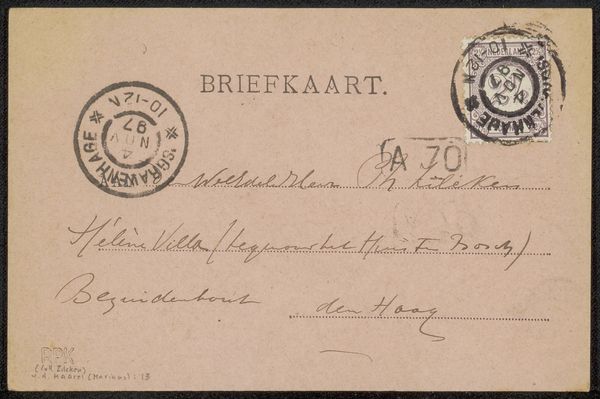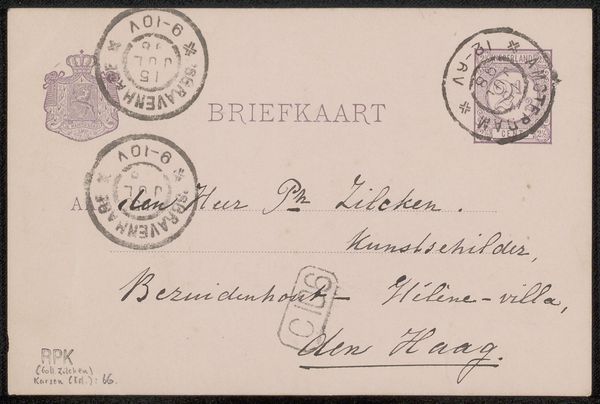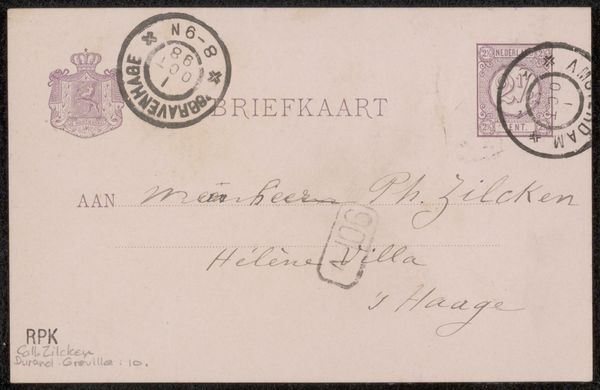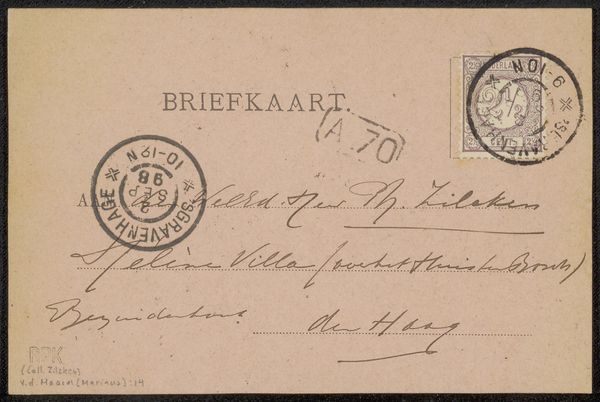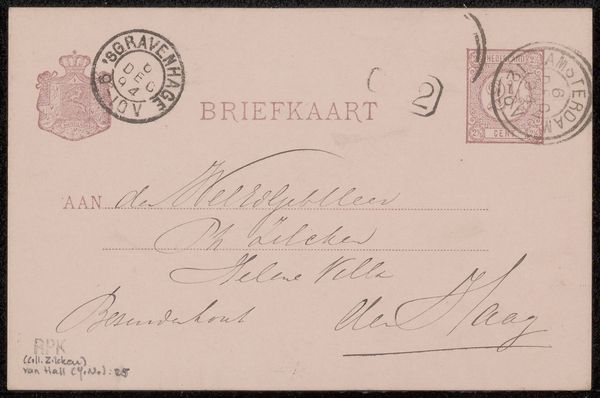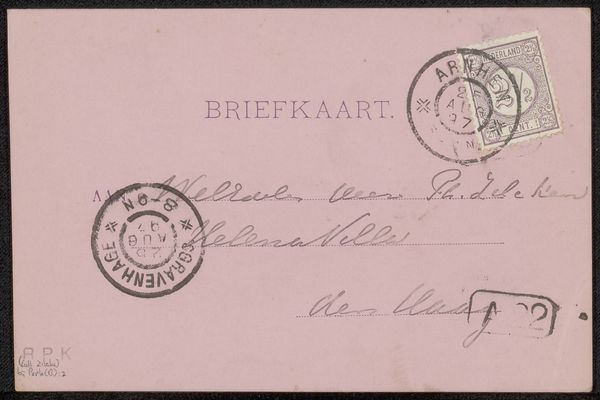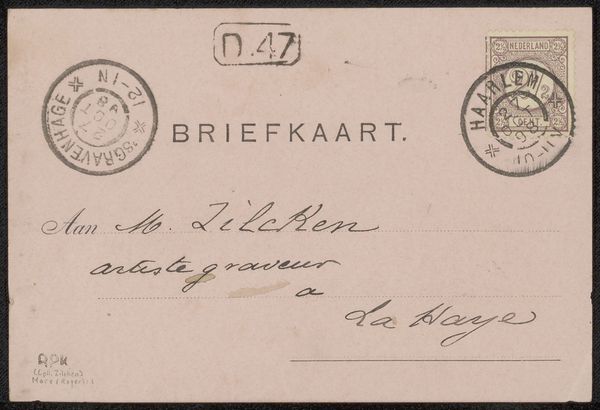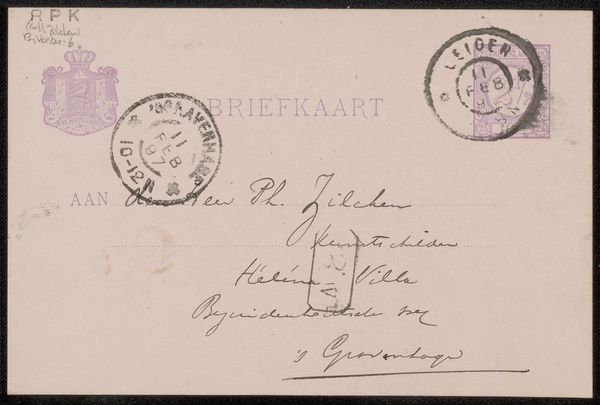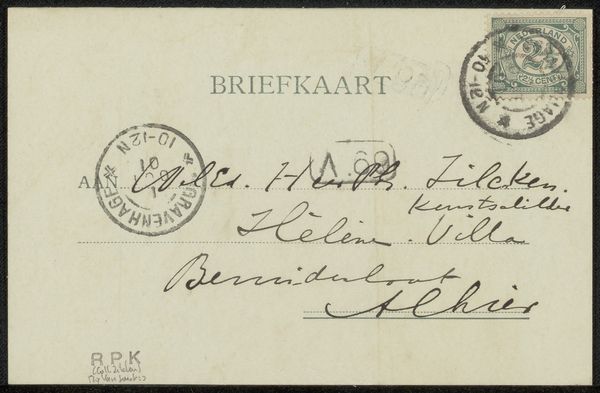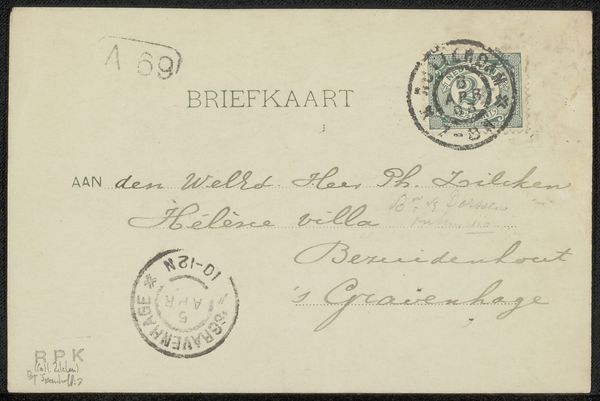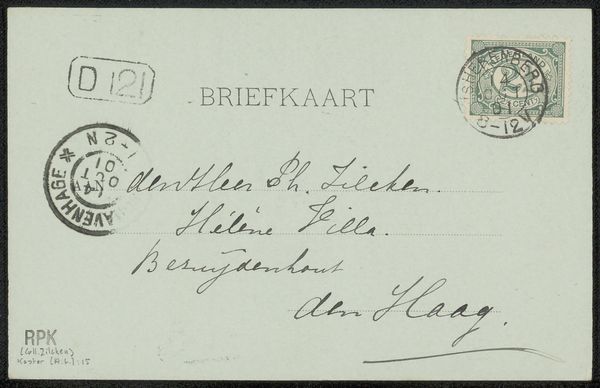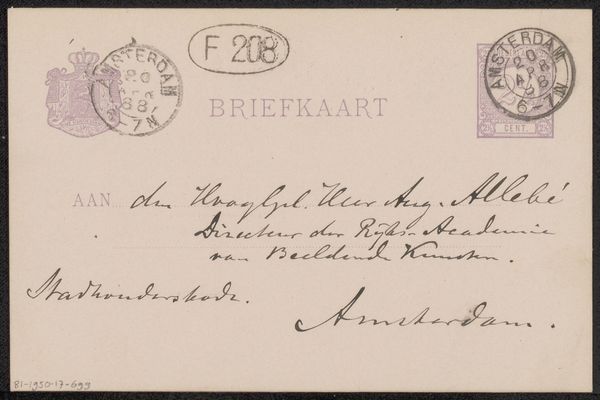
Copyright: Rijks Museum: Open Domain
Curator: This intriguing artifact, "Briefkaart aan Philip Zilcken," tentatively dated to 1898, is a drawing by J.E. Bauck rendered in ink on paper. It is essentially an envelope. Editor: My immediate sense is of intimacy and historical distance. The faded ink and the handwriting speak of a personal connection severed by time. There’s a delicacy in the lines despite its practical function. Curator: Indeed. As a historical object, this piece highlights the materiality of correspondence during the Post-Impressionist era. The stamps and postmarks, remnants of the Dutch postal system, emphasize how communication relied on specific social and bureaucratic infrastructures. Editor: Beyond the administrative markings, the address script gives it personality. It appears directed to “Philip Zilcken”, possibly an artist or art critic from that period? The mention of “Helena-Villa” suggests a specific location imbued with particular meaning. Does this location carry symbolic significance, perhaps relating to creativity or sanctuary? Curator: Zilcken was indeed a well-known artist, critic, and collector in the Netherlands during that period. Bauck appears to be sending correspondence to a peer. It illustrates the artist's network and communication amongst contemporaries. Editor: So this object is a sort of symbolic anchor to artistic dialogues of the time. The visual language—the specific lettering style, and the layout—speak to an era where handwriting carried great importance. The care given to the address turns the envelope into an art object itself. Is the "A 81" stamp of any symbolic note to the recipient or sender? Curator: I’m afraid I’m unfamiliar with the specifics of the stamp, although this piece allows us a glimpse into how artists cultivated relationships through correspondence. Ephemera such as this provide a window into the artistic world of the fin de siècle. Editor: It leaves me contemplating the fragility of these connections. These are intimate gestures preserved unintentionally by time and chance. I am so curious to look further into Helena-Villa now. Curator: Yes, it’s through objects like these that we can reassemble the social and artistic tapestry of a period. Editor: And reconstruct the individual narratives that built them, bit by bit.
Comments
No comments
Be the first to comment and join the conversation on the ultimate creative platform.
